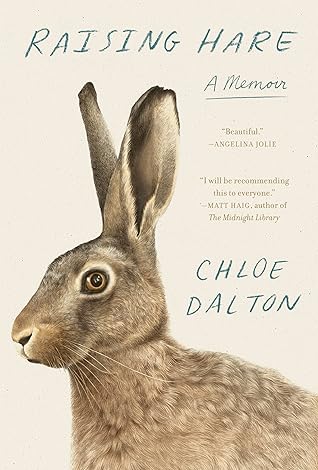More on this book
Community
Kindle Notes & Highlights
orphan from another mother by wrapping it in the skinned pelt of her dead lamb. Only if the orphan smelled sufficiently like
front paws, each barely half the length of my little finger and
as slender as a pencil, and sat unsteadily on its hindquarters,
Bamako, Baghdad, Kabul, Algiers, Damascus, Ulaanbaatar, Tallinn, Sarajevo and Siem Reap. Working
centrifugal forces of the pandemic flung me home to
muzzle was edged in ivory, its mouth round, a small “O” of perpetual surprise, rimmed in fine soot-coloured hair. Its nostrils too were trimmed in darkest grey. The fur on its back was brindled and tussocky. Each ear, narrow at the root, broadened out
into a wide oval before tapering into a slanted tip, sheathed in fur so black that it seemed to have been dipped in ink.
paws were tipped in white, as if it had w...
This highlight has been truncated due to consecutive passage length restrictions.
Unlike a dog’s, the soles of the leveret’s paws were furry: soft and warm to the touch and always immaculate. One ancient Greek name f...
This highlight has been truncated due to consecutive passage length restrictions.
because a hare’s teeth grow continuously throughout its life.
hare’s teeth grow continuously throughout its life. A captive
The leveret grew at an astonishing rate, particularly
its ears and paws, which appeared to expand more rapidly than the rest of its body, perhaps because of the role speed and hearing play in a hare’s safety. I
roughly thirty days old, leverets are more than eight times as heavy ...
This highlight has been truncated due to consecutive passage length restrictions.
The hind foot of the leveret alone would grow to six inches.
poems of William Cowper, who in 1774 was suffering from “dejection of spirits” after a romance that ended in separation.
In his poem “Epitaph on a Hare,” written
At last, I had something to go on. Cowper’s poems about his hares led me to an essay he’d later written for a publication called The
Gentleman’s Magazine,
[hares] best,” including “sow-thistle, dent-de-lion [dandelion], and lettuce,” “green corn,” “straw of any kind,” “aromatic herbs,” “oats,” and a...
This highlight has been truncated due to consecutive passage length restrictions.
“shreds of carrot” and “the rind...
This highlight has been truncated due to consecutive passage length restrictions.
I offered it parsley, which it nibbled, and coriander, which it devoured. To start with, I’d cut sprigs for
doubt that Cowper imagined his poems might be used as a guide to raising a leveret nearly 250
years later,
tempt it was disregarded. But it loved an occasional raspberry.
It adored
clover and would bury itself in the deepest patches, until only the tips of its ears could be seen,
Each morning, the leveret now followed at my heels into the kitchen, standing on its hind legs and resting its forepaws on my leg as I bent down to sit on
The leveret, I learnt, was a European brown hare—or Lepus europaeus—
Lepus capensis or Cape hare, the oldest known species of hare,
lièvre, and means “little hare.”
broom hare that lives high in Spain’s Cantabrian Mountains
named after
plants which it...
This highlight has been truncated due to consecutive passage length restrictions.
uses for s...
This highlight has been truncated due to consecutive passage length restrictions.
Corsican or Apennine hare, in mainland Italy and the islands of Sicily and Corsica; and the small, white-spotted Ib...
This highlight has been truncated due to consecutive passage length restrictions.
Desert-dwelling hares
Arctic hare can survive
temperatures of minus forty to minus twenty-two degrees Fahrenheit, and
snow to obtain water. It changes the colour of its pelt from brown to white d...
This highlight has been truncated due to consecutive passage length restrictions.
snowshoe hare and the exquisitely named Lepus timidus,...
This highlight has been truncated due to consecutive passage length restrictions.
only a quarter of all leverets reach adulthood, and
50 per cent mortality rate
among leverets in their first twenty-...
This highlight has been truncated due to consecutive passage length restrictions.
Hares, I learnt, are “crepuscular”
most active during dawn and dusk as well as the nocturnal hours, which help to mask them from predators.
fifteen inches long from the tip of its hind legs to its front feet, resting against the glass, lean and powerful.
leveret at ten weeks old had survived longer than anyone had expected,
“What are you going to call it?” I tended to try to change the subject, to which I had developed
Rabbits and hares belong to the same “order” of animals, Lagomorpha.


